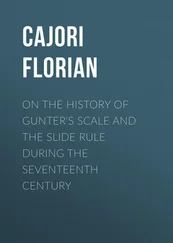Charles Addison - The History of the Knights Templars, the Temple Church, and the Temple
Здесь есть возможность читать онлайн «Charles Addison - The History of the Knights Templars, the Temple Church, and the Temple» — ознакомительный отрывок электронной книги совершенно бесплатно, а после прочтения отрывка купить полную версию. В некоторых случаях можно слушать аудио, скачать через торрент в формате fb2 и присутствует краткое содержание. Жанр: foreign_antique, foreign_prose, на английском языке. Описание произведения, (предисловие) а так же отзывы посетителей доступны на портале библиотеки ЛибКат.
- Название:The History of the Knights Templars, the Temple Church, and the Temple
- Автор:
- Жанр:
- Год:неизвестен
- ISBN:нет данных
- Рейтинг книги:5 / 5. Голосов: 1
-
Избранное:Добавить в избранное
- Отзывы:
-
Ваша оценка:
- 100
- 1
- 2
- 3
- 4
- 5
The History of the Knights Templars, the Temple Church, and the Temple: краткое содержание, описание и аннотация
Предлагаем к чтению аннотацию, описание, краткое содержание или предисловие (зависит от того, что написал сам автор книги «The History of the Knights Templars, the Temple Church, and the Temple»). Если вы не нашли необходимую информацию о книге — напишите в комментариях, мы постараемся отыскать её.
The History of the Knights Templars, the Temple Church, and the Temple — читать онлайн ознакомительный отрывок
Ниже представлен текст книги, разбитый по страницам. Система сохранения места последней прочитанной страницы, позволяет с удобством читать онлайн бесплатно книгу «The History of the Knights Templars, the Temple Church, and the Temple», без необходимости каждый раз заново искать на чём Вы остановились. Поставьте закладку, и сможете в любой момент перейти на страницу, на которой закончили чтение.
Интервал:
Закладка:
A. D. 1159.
The Master of the Temple, Brother Bertrand de Blanquefort, was liberated from captivity at the instance of Manuel Comnenus, Emperor of Constantinople. 60 60 Cinnamus , lib. iv. num. 22.
After his release he wrote several letters to Louis VII., king of France, describing the condition and prospects of the Holy Land; the increasing power and boldness of the infidels; and the ruin and desolation caused by a dreadful earthquake, which had overthrown numerous castles, prostrated the walls and defences of several towns, and swallowed up the dwellings of the inhabitants. “The persecutors of the church,” says he, “hasten to avail themselves of our misfortunes; they gather themselves together from the ends of the earth, and come forth as one man against the sanctuary of God.” 61 61 Gesta Dei , inter regum et principum epistolas, tom. i. p. 1173, 6, 7. Hist. Franc. Script. tom. iv. p. 692, 693.
It was during his mastership, that Geoffrey, the Knight Templar, and Hugh of Cæsarea, were sent on an embassy into Egypt, and had an interview with the Caliph. They were introduced into the palace of the Fatimites through a series of gloomy passages and glittering porticos, amid the warbling of birds and the murmur of fountains; the scene was enriched by a display of costly furniture and rare animals; and the long order of unfolding doors was guarded by black soldiers and domestic eunuchs. The sanctuary of the presence chamber was veiled with a curtain, and the vizier who conducted the ambassadors laid aside his scimetar, and prostrated himself three times on the ground; the veil was then removed, and they saw the Commander of the Faithful. 62 62 Hist. de Saladin, par M. Marin , tom. i. p. 120, 1. Gibbon , cap. 59.
Brother Bertrand de Blanquefort, in his letters to the king of France, gives an account of the military operations undertaken by the Order of Temple in Egypt, and of the capture of the populous and important city of Belbeis, the ancient Pelusium. 63 63 Gesta Dei , epist. xiv. p. 1178, 9.
During the absence of the Master with the greater part of the fraternity on that expedition, the sultan Noureddin invaded Palestine; he defeated with terrible slaughter the serving brethren and Turcopoles, or light horse of the order, who remained to defend the country, and sixty of the knights who commanded them were left dead on the plain. 64 64 De fratribus nostris ceciderunt LX. milites fortissimi, præter fratres clientes et Turcopulos, nec nisi septem tantum evasêre periculum. Epist. Gauf. Fulcherii procuratoris Templi Ludovico regi Francorum. Gesta Dei , tom. i. p. 1182, 3, 4.
A. D. 1164.
The zeal and devotion of the Templars in the service of Christ continued to be the theme of praise and of admiration both in the east and in the west. Pope Alexander III., in his letters, characterizes them as the stout champions of Jesus Christ, who warred a divine warfare, and daily laid down their lives for their brethren. “We implore and we admonish your fraternity,” says he, addressing the archbishops and bishops, “that out of love to God, and of reverence to the blessed Peter and ourselves, and also out of regard for the salvation of your own souls, ye do favour, and support, and honour them, and preserve all their rights entire and intact, and afford them the benefit of your patronage and protection.” 65 65 Registr. epist. apud Martene , vel script. tom. ii. col. 846, 847, 883.
Amalric, king of Jerusalem, the successor of Baldwin the Third, in a letter “to his dear friend and father,” Louis the Seventh, king of France, beseeches the good offices of that monarch in behalf of all the devout Christians of the Holy Land; “but above all,” says he, “we earnestly entreat your Majesty constantly to extend to the utmost your favour and regard to the Brothers of the Temple, who continually render up their lives for God and the faith, and through whom we do the little that we are able to effect, for in them indeed, after God, is placed the entire reliance of all those in the eastern regions who tread in the right path.”… 66 66 “… præcipue pro fratribus Templi, vestram exoramus Majestatem … qui quotidie moriuntur pro Domino et servitio, et per quos possumus, si quid possumus. In illis enim tota summa post Deum consistit omnium eorum, qui sano fiunt consilio in partibus orientis…” Gesta Dei , tom. i. epist. xxi. p. 1181.
Philip of
Naplous.
A. D. 1167.
The Master, Brother Bertrand de Blanquefort, was succeeded (A. D. 1167,) by Philip of Naplous, the first Master of the Temple who had been born in Palestine. He had been Lord of the fortresses of Krak and Montreal in Arabia Petræa, and took the vows and the habit of the order of the Temple after the death of his wife. 67 67 Dominus fuit Arabiæ secundæ, quæ est Petracensis, qui locus hodie Crach dicitur, et Syriæ Sobal … factus est Magister Militiæ Templi. — Will. Tyr. lib. xxii. cap. 5.
We must now pause to take a glance at the rise of another great religio-military institution which, from henceforth, takes a leading part in the defence of the Latin kingdom.
In the eleventh century, when pilgrimages to Jerusalem had greatly increased, some Italian merchants of Amalfi, who carried on a lucrative trade with Palestine, purchased of the Caliph Monstasser-billah , a piece of ground in the christian quarter of the Holy City, near the Church of the Resurrection, whereon two hospitals were constructed, the one being appropriated for the reception of male pilgrims, and the other for females. Several pious and charitable Christians, chiefly from Europe, devoted themselves in these hospitals to constant attendance upon the sick and destitute. Two chapels were erected, the one annexed to the female establishment being dedicated to St. Mary Magdalene, and the other to St. John the Eleemosynary, a canonized patriarch of Alexandria, remarkable for his exceeding charity. The pious and kind-hearted people who here attended upon the sick pilgrims, clothed the naked and fed the hungry, were called “The Hospitallers of Saint John.”
On the conquest of Jerusalem by the Crusaders, these charitable persons were naturally regarded with the greatest esteem and reverence by their fellow-christians from the west; many of the soldiers of the Cross, smitten with their piety and zeal, desired to participate in their good offices, and the Hospitallers, animated by the religious enthusiasm of the day, determined to renounce the world, and devote the remainder of their lives to pious duties and constant attendance upon the sick. They took the customary monastic vows of obedience, chastity, and poverty, and assumed as their distinguishing habit a black mantle with a white cross on the breast. Various lands and possessions were granted them by the lords and princes of the Crusade, both in Palestine and in Europe, and the order of the hospital of St. John speedily became a great and powerful institution. 68 68 Will. Tyr. lib. xviii. cap. 4, 5.
Gerard, a native of Provence, was at this period at the head of the society, with the title of “Guardian of the Poor.” He was succeeded (A. D. 1118) by Raymond Dupuy, a knight of Dauphiné, who drew up a series of rules for the direction and government of his brethren. In these rules no traces are discoverable of the military spirit which afterwards animated the order of the Hospital of St. John. The Abbé de Vertot, from a desire perhaps to pay court to the Order of Malta, carries back the assumption of arms by the Hospitallers to the year 1119, and describes them as fiercely engaged under the command of Raymond Dupuy, in the battle fought between the Christians and Dol de Kuvin, Sultan of Damascus; but none of the historians of the period make any mention whatever of the Hospitallers in that action. De Vertot quotes no authority in support of his statement, and it appears to be a mere fiction.
Читать дальшеИнтервал:
Закладка:
Похожие книги на «The History of the Knights Templars, the Temple Church, and the Temple»
Представляем Вашему вниманию похожие книги на «The History of the Knights Templars, the Temple Church, and the Temple» списком для выбора. Мы отобрали схожую по названию и смыслу литературу в надежде предоставить читателям больше вариантов отыскать новые, интересные, ещё непрочитанные произведения.
Обсуждение, отзывы о книге «The History of the Knights Templars, the Temple Church, and the Temple» и просто собственные мнения читателей. Оставьте ваши комментарии, напишите, что Вы думаете о произведении, его смысле или главных героях. Укажите что конкретно понравилось, а что нет, и почему Вы так считаете.












